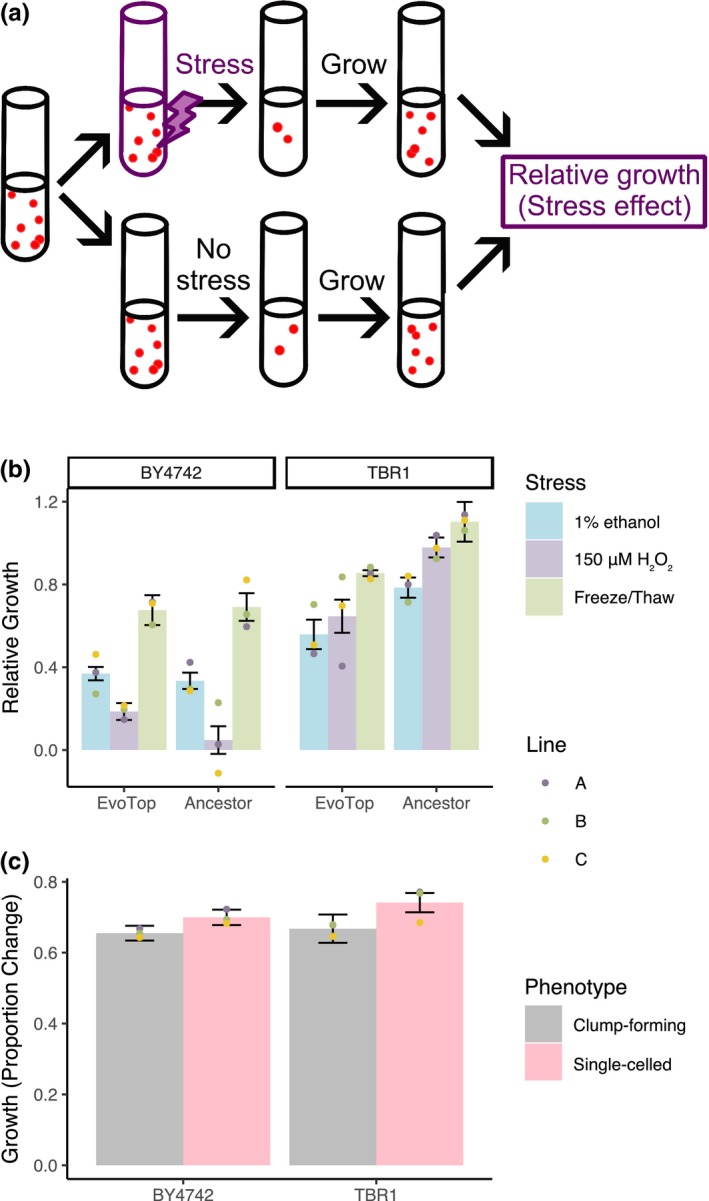Figure 6.

Clumping protects yeast from stress, but hinders growth in normal conditions. (a) Experimental procedure for testing the effects of three different forms of stress. Cells were diluted to equal concentrations, exposed to each stress, and then allowed to grow for 1.5 hr. The stress effect (relative growth) was the ratio of growth with stress to growth without stress. (b) Significant differences in the relative growth of stressed cells compared to unstressed controls indicated that single‐celled TBR1 EvoTops were less stress resistant than the ancestral clump‐forming TBR1 cells (three‐way variant (F(1, 36) = 25.16, p < 0.0001) by stress by line ANOVA; bars indicate mean relative growth, error bars indicate SEM, and dots indicate mean relative growth per line). In contrast, the relative growth of BY4742 ancestral and BY4742 EvoTop variants did not vary significantly from each other after stress treatment (F(1, 36) = 1.42, p = 0.241). (c) Under stress‐free conditions, clump‐forming cells had significantly lower growth over an hour and a half than single cells, but growth rates did not vary significantly from each other by strain or line (three‐way strain by phenotype (F(1, 96) = 4.09, p = 0.046) by line ANOVA; bars indicate mean growth, error bars indicate SEM, and dots indicate mean growth per line). The clump‐forming ancestral TBR1 cells had lower growth than EvoTop TBR1 single cells, while unstressed ancestral BY4742 single cells had higher growth than their clumpier EvoTop BY4742 counterparts
